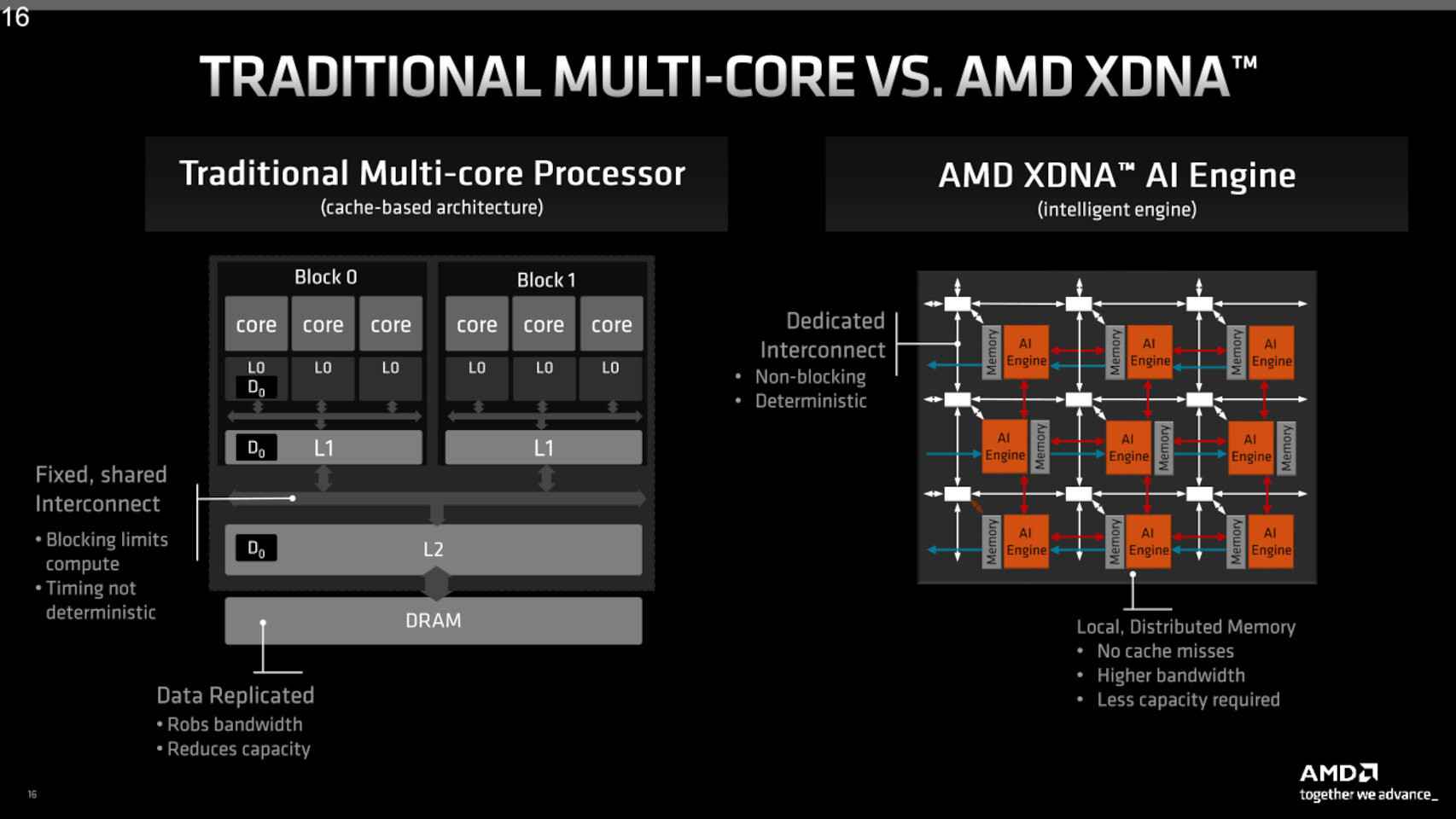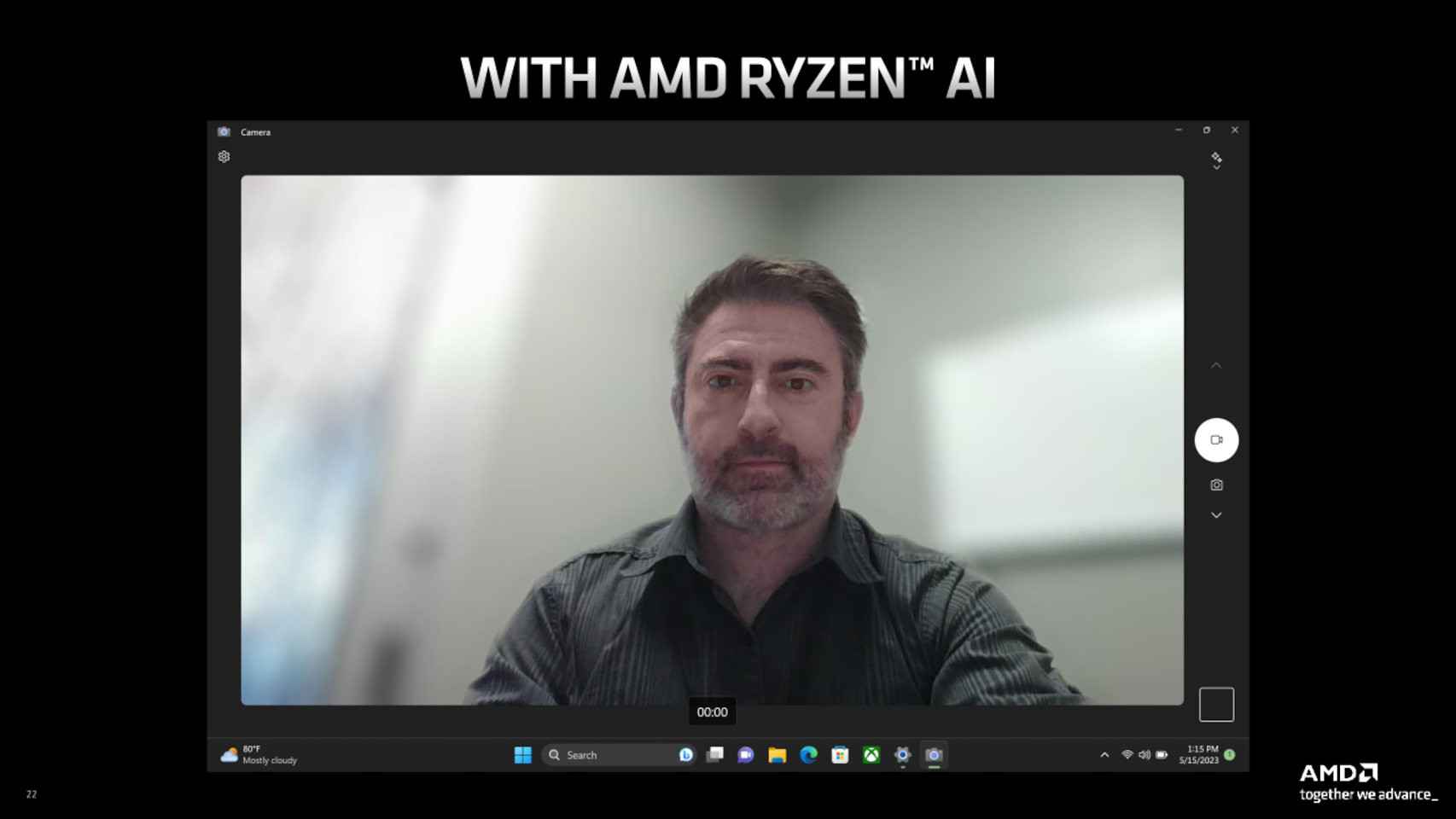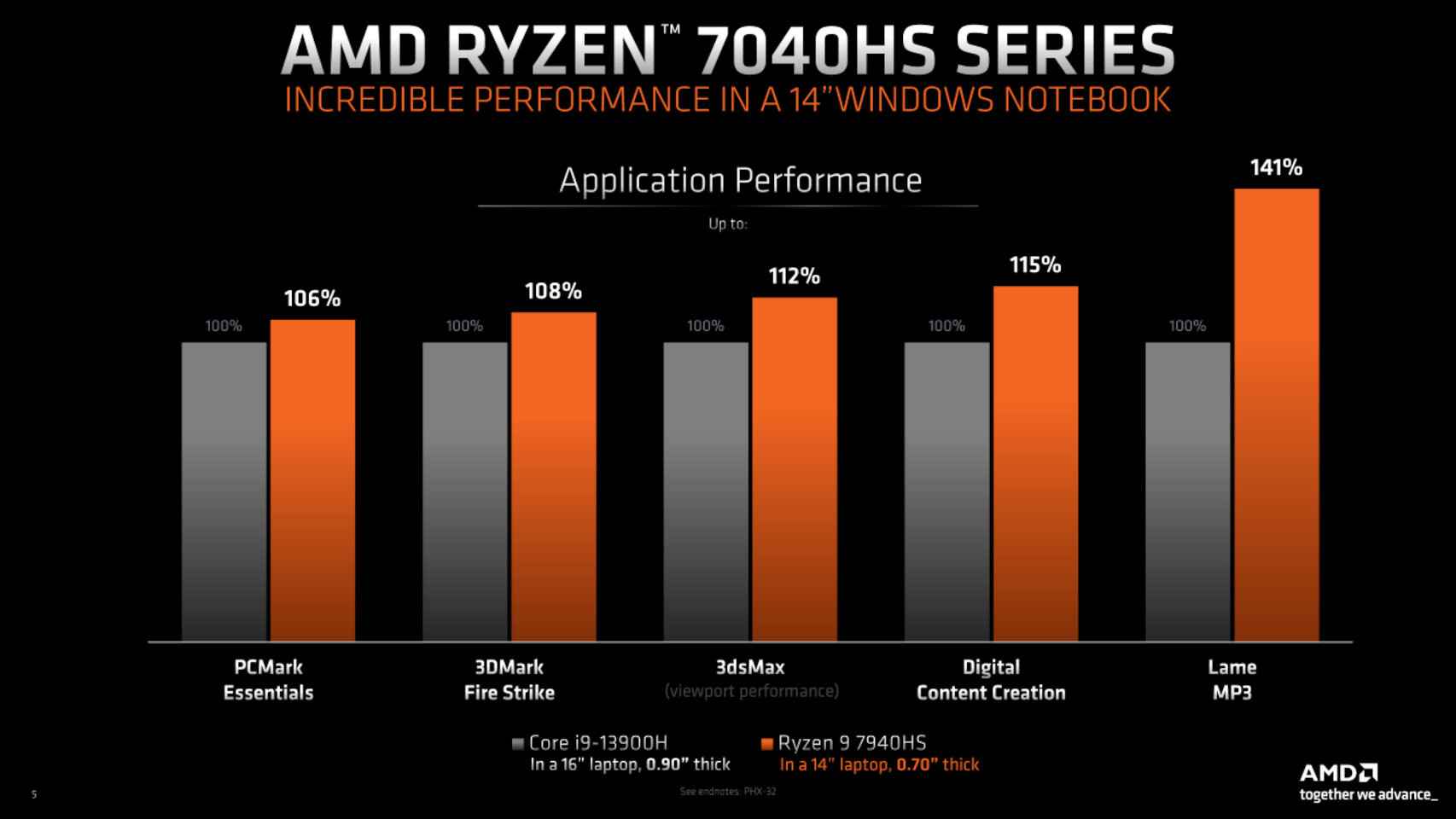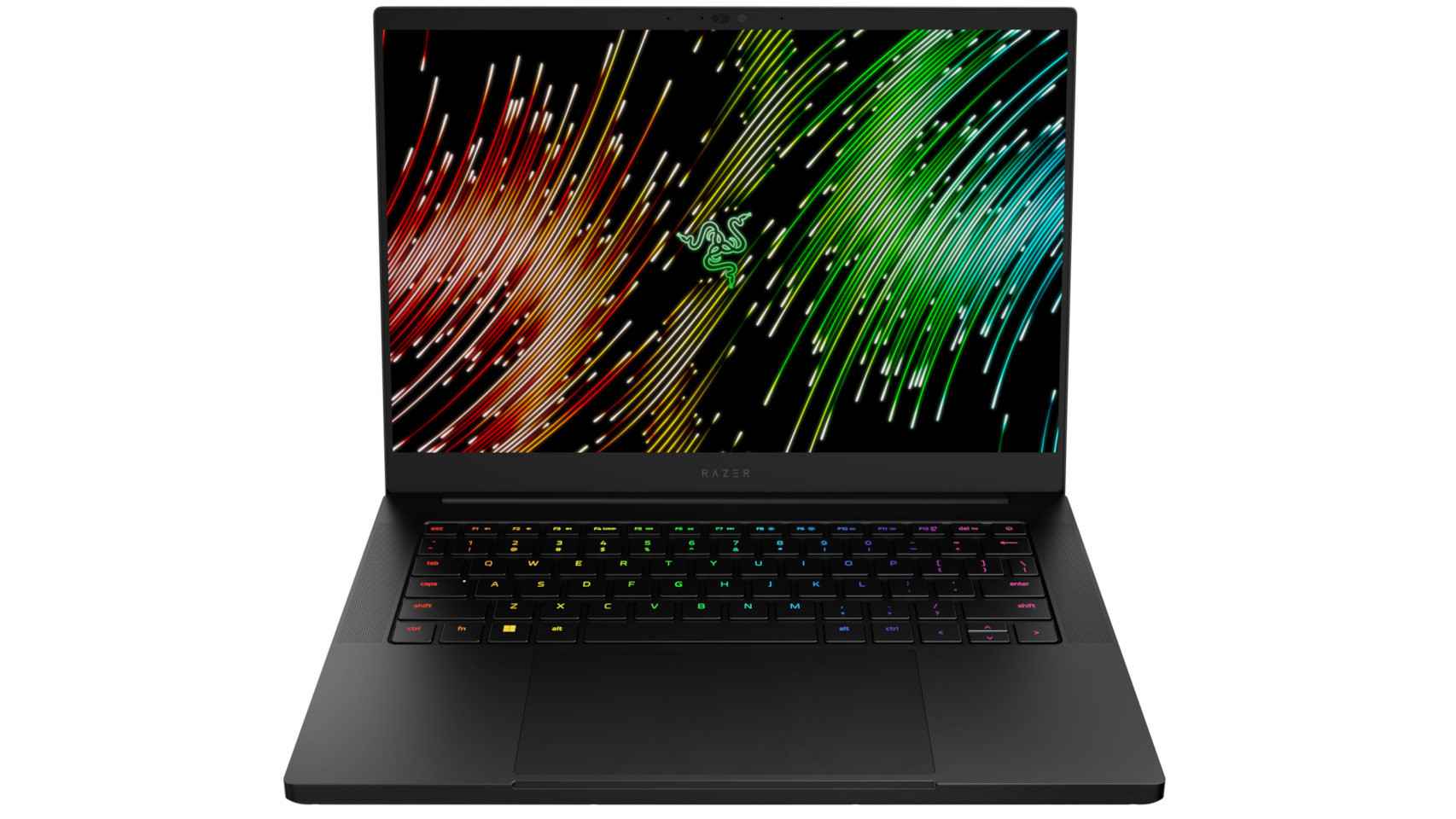The technological world is in the midst of a revolution initiated by Artificial Intelligence. Projects like ChatGPT have demonstrated the potential of generative AI, and this technology is finding its way into programs like Photoshop, Microsoft Word, and many more. But all these AI tools have one thing in common: they need a connection to an external server to be able to use them.
And it is that the average user does not have the “hardware” necessary to locally execute artificial intelligence models; and now AMD wants to change that. The new Ryzen 7040HS processor line is the first to have its own built-in Artificial Intelligence engine on the chip itself, which will make it possible to run programs using AI for all sorts of tasks.
The reader will probably think that is impossible, and would not be far from the truth. In a presentation to which EL ESPAÑOL – El Androide Libre had access, the company’s representatives confess that they are still taking the first steps and that there is still a long way to go to reach the level of the servers; but at the same time, this first step is possible because Artificial intelligence is already in computersboth in Windows and in programs like the aforementioned Photoshop.
The processor for AI
In other words, there is already a demand for products capable of speed up AI processing. At AMD they compare this to what happened in the mid 90’s when the first 3D accelera tor graphics cards appeared. Until then, video games and applications that used three-dimensional graphics relied solely on processor power to perform the necessary calculations. The advent of “hardware” specially designed for this type of calculation has greatly accelerated (pun intended) the development of 3D graphics in just a few years. AMD hopes today’s action will have a similar impact on the industry.
for this he was born AI Ryzen, a platform dedicated exclusively to the execution of Artificial Intelligence based on neural networks. In the new Ryzen 7040HS line of processors, this is a small part of the chip designed to run data streams rather than the traditional structure of any program algorithm. The XDNA AI Engine is the engine, separate from the processor structure, dedicated to these types of executions; Without going into technical details, let’s just say that cache memory management has absolutely nothing to do with improving the flow of data between “neurons”.
AMD’s AI engine architecture is completely different from a normal CPU (left)
In fact, Windows already has artificial intelligence features, and they can be used with this engine. For example, Windows 11 has two AI-based webcam technologies: One changes the image to make it look like we are looking directly at the camera instead of the screen, and the other recognizes the background and blurs it to protect our privacy.
Windows is already able to use Artificial Intelligence functions with the new Ryzen
AMD hopes that other programs and projects using this engine will appear in the coming months, including personal assistants and content creation; the company has advanced that Adobe Premiere Pro will be updated to take advantage of “hardware” designed for AI. This puts AMD in a very good position, as for now they are the only PC processors capable of running AI locally.
more powerful processors
Ryzen AI is not the only novelty in this range, commissioned by the awesome Ryzen 9 7940HS with 8 cores and 16 threads, capable of reaching 5.2 GHz. But perhaps more striking than that is that AMD is aiming for a type of laptop that is thinner and lighter than those that have been produced so far. ‘now ; Specifically, these processors are aimed at 14-inch laptops that offer great portability and performance. The range remains as follows:
- Ryzen 9 7940HS – 8 cores, 16 threads. 4.0GHz (up to 5.2GHz). Cache memory: 24MB. TDP: 35-54W. Ryzen AI.
- Ryzen 7 7840HS – 8 cores, 16 threads. 3.8GHz (up to 5.1GHz). Cache memory: 24MB. TDP: 35-54W. Ryzen AI.
- Ryzen 5 7640HS – 6 cores, 12 threads. 4.3GHz (up to 5.0GHz). Cache memory: 22MB. TDP: 35-54W. Ryzen AI.
To demonstrate the potential of this range, AMD showed off some graphics that speak for themselves: the new Ryzen 9 7940HS outperformed the Intel competition (the Core i9-13900H) in almost all tests, despite the fact that they have been made on a 14 inch laptop compared to the Intel-based 16-inch laptop. A crucial difference, because a larger size also means better cooling and therefore a greater margin to take advantage of the power of the chips. The 14-inch AMD laptop was just 1.78cm thick, while the 16-inch Intel model was 2.2cm thick.
AMD promises more powerful CPUs than Intel in thinner, lighter laptops
Despite this handicap, AMD’s new model showed much better performance in some tasks, and matched Intel in the worst. In content creation, AMD claims its processor is 15% better; and in video games this could be the new benchmark for gaming laptops, achieving 5% higher performance in games like F1 2021, Rainbow Six: Siege oh Total War: Warhammer 3over 13% in Borderlands 3. Even when he lost, it wasn’t much, down 2% in Cyberpunk 2077.
The jump in power we see in x86 processors is evident, when the brands they finally dare to compare themselves to Apple, which surprised everyone with the switch to ARM. The Ryzen 9 7940HS was 7% higher in Adobe Photoshop compared to an Apple M2 Pro-based MacBook, and 11% higher in Passmark CPUMark. Of course, all this data comes directly from AMD, since the press has not yet been able to test the “hardware”, so, as always, it must be taken with a grain of salt. But the improvement seems obvious.
Although some of the laptops that will use these processors already have GPUs, it is also good to know that the integrated GPU, the Radeon 780M has improvedand already lets you play games like Grand Theft Auto V at 60 frames per second and 1080p resolution. The last improvement concerns energy efficiency, which allows up to 9 hours of video playback with a 68.1 Wh battery.
New Razer Blade 14
This is such a big launch that Razer wanted to be the first to confirm a new laptop based on these Ryzen processors; of course, it has already been confirmed that other manufacturers such as Asus ROG, HP, Lenovo and Acer will have their own alternatives. He new Razer Blade 14 will be the model with the honor to launch the Ryzen 9 7940HS with Ryzen AI, the new 14-inch model that promises to be the most powerful yet. How powerful? Razer sees 22% buffs in Shadow of the Tomb Raider, 19% in Cyberpunk 2077, and 17% in Far Cry 6, so there are clearly changes.
In addition to the processor, this laptop makes the jump to the next generation of Nvidia graphics, the GeForce RTX 4070 with a TDP of up to 140W to achieve up to 33% more power compared to the previous generation. Such power forced a cooling upgrade, with a new vapor chamber system featuring the thinnest fins ever (just 0.05mm) that cover 59% more heat dissipation area.
The new Razer Blade 14 is based on the Ryzen 7040HS
The rest of the laptop lives up to that “hardware”, with a 240Hz display and 3ms response time at QHD+ resolution. The memory is dual-channel, reaching 5600 MHz, and Razer has pointed out that it can be expanded up to 64 GB if the user needs it in the future. On the sides, a USB4 type C port, as well as an HDMI 2.1 output to take advantage of modern televisions and monitors, as well as a USB 3.2 Gen 2 type A. And of course, it’s a razor, so we have the usual: RGB lighting by Razer Chroma, sound THX and Razer Synapse as control center without more pre-installed programs. The Razer Blade 14 will be available from June 20 starting at $2,399.99, with pricing TBD in Europe.
You may be interested
Follow the topics that interest you
Table of Contents












